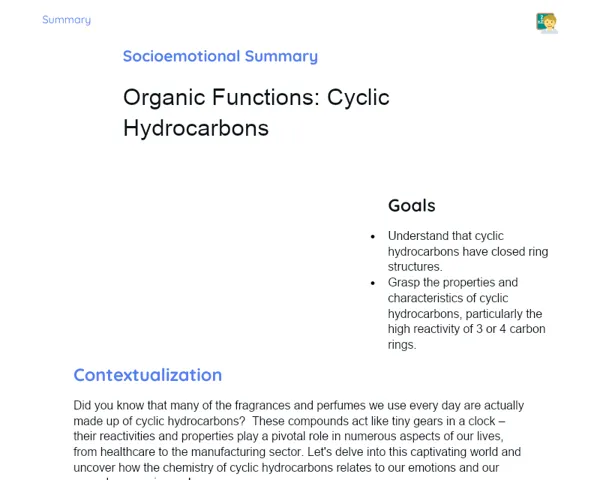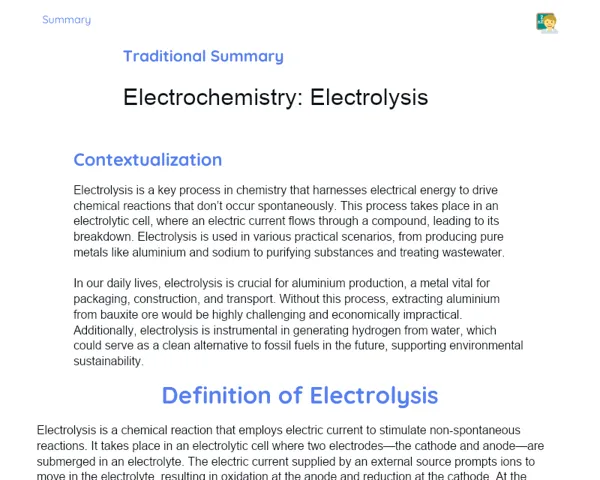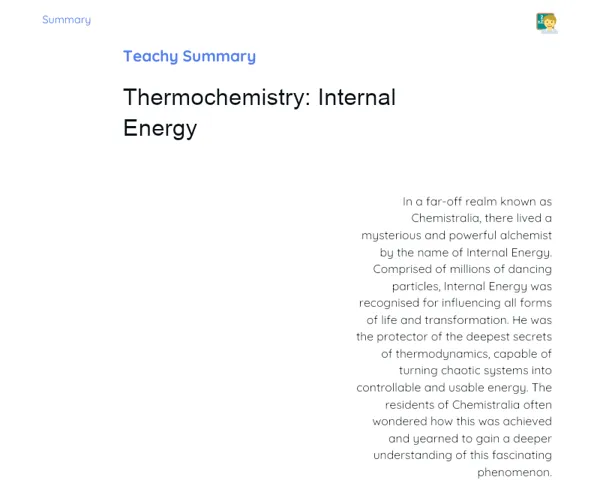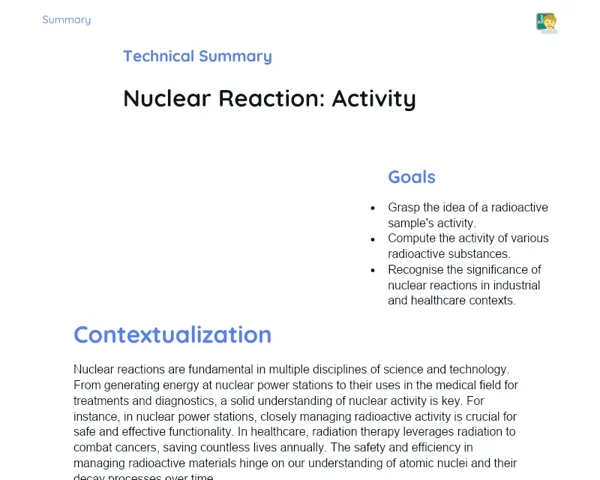Objectives
1. 🇿🇦 To clearly differentiate between dissociation and ionization and recognize each process in various contexts.
2. 🇿🇦 To develop both practical and theoretical skills to analyse chemical solutions and anticipate their behaviour in water.
Contextualization
Did you know that how medications dissolve in the body can depend on whether the substance goes through dissociation or ionization? This concept is not only vital for scientists developing effective drugs but is also critical in water treatment and purification, impacting both our health and the environment. By understanding these processes, you’re not just learning chemistry, but also discovering how these principles apply to real-life situations that influence our everyday lives.
Important Topics
Dissociation
Dissociation is when an ionic compound breaks down into smaller ions when mixed with water. This process is essential to comprehend how substances like NaCl (table salt) behave in water. When NaCl dissolves, it dissociates, releasing Na+ and Cl- ions, which are crucial for various chemical reactions, including neutralising acids.
-
The ions created from dissociation can conduct electricity, a property utilised in lab tests.
-
Dissociation plays a key role in industries and water treatment, where maintaining ionic balance is critical.
-
Understanding dissociation aids in predicting how solutions behave in chemical reactions, especially during neutralisation.
Ionization
Ionization is the process of forming ions from neutral molecules when they dissolve in water, as seen with HCl (hydrochloric acid). When HCl is introduced to water, it ionizes, resulting in H+ and Cl- ions. This concept is fundamental for grasping the behaviour of strong acids in solutions, affecting aspects like pH and chemical reactivity.
-
Ionization of strong acids is nearly complete in aqueous solutions, making them highly reactive.
-
Understanding ionization is crucial for grasping acidity and base strength, and their behaviours in chemical reactions.
-
Ionization is a vital concept in developing approaches to manage acids and bases in both industrial and natural environments.
Testing Methods
Lab testing methods, such as pH measurement and conductivity tests, are essential for distinguishing between dissociation and ionization. These tests help determine the ionic character of a solution, which is vital for many chemical and industrial applications. For instance, measuring pH can indicate whether an acid has fully ionised, while conductivity reflects the presence of free ions capable of conducting electricity.
-
pH measurements can help identify the strength of an acid or base depending on the extent of ionization.
-
Conductivity tests verify how well a substance has dissociated or ionised in solution.
-
These tests are foundational in research laboratories and crucial for quality control across various industries.
Key Terms
-
Dissociation: The process by which an ionic compound separates into smaller ions when in solution.
-
Ionization: The formation of ions from neutral molecules when dissolved in water.
-
pH: A measure of the acidity or alkalinity of a solution, influenced by dissociation and ionization.
-
Conductivity: A property indicating how well a solution can conduct electricity, instrumental in measuring ion presence and concentration.
For Reflection
-
How can grasping the concepts of dissociation and ionization enhance sustainable water treatment efforts?
-
In what ways does the understanding of ionization affect the medications you use daily?
-
Why is it important to measure pH and conductivity in industries that rely on chemical processes?
Important Conclusions
-
Today, we explored the crucial distinctions between dissociation and ionization, foundational ideas that impact everything from purifying water to the efficacy of medications.
-
We learned how NaCl dissociates in water into Na+ and Cl- ions and how HCl ionizes to form H+ and Cl- ions.
-
We discussed how tests like pH and conductivity are essential for identifying and differentiating these chemical processes in solutions, which is significant across multiple fields of science and technology.
To Exercise Knowledge
- Dissociation and Ionization Experiment at Home: Use table salt (NaCl) and vinegar (acetic acid) to observe these processes. Dissolve each in water separately and note the reactions.
- Chemical Observation Journal: For a week, keep track of any chemical reactions you observe in everyday life, whether natural or caused by you.
- Concept Map: Create a concept map to differentiate between dissociation and ionization, using examples from your own experiences and the lesson.
Challenge
🔍 Chemical Detective Challenge: Find at least three products in your home that undergo dissociation or ionization. Describe the chemical processes involved and how they influence the use of these products.
Study Tips
-
Review your lesson notes and explain the differences between dissociation and ionization to a friend or family member. Teaching is one of the best ways to learn!
-
Watch educational videos demonstrating dissociation and ionization in the lab to better visualise the concepts discussed.
-
Engage with educational games and chemistry apps to reinforce your understanding of the properties of substances in solution.



